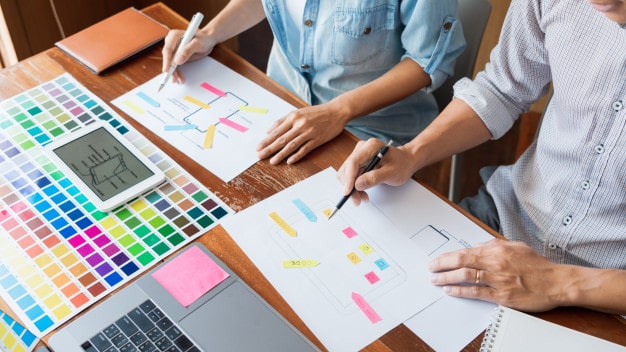You’ve probably got some product ideas too. Possibly, you shelved them because you didn’t know what to do next. Well, turns out you don’t have to have big dollars, a degree in physics, or a lab to get started with your product idea.
A prototype gives physical proof of your product’s feasibility and makes it easier to spot design flaws. You can use the prototype to secure investment, pique interest on a crowdfunding platform, and make the manufacturing process easier.
In this post, we’ll walk you through a step-by-step process for creating a product prototype. You’ll learn how to develop your ideas, find manufacturers, and even file for patents. And yes, you can do it.
Related Post: 10 Interesting Product Ideas Trending Right Now
What is a Product Prototype?
The Merriam-Webster dictionary defines a prototype as an “original model on which something is patterned”.
In lay speak, a prototype is a real-life, 3D version of your product idea.
A 3D printed copy of a toy design is a “prototype”, as is a paper-and-glue model of a new tool. If it exists to demonstrate an idea or study its feasibility, you can call it a prototype.
How to Create Your Product Prototype
If you’re reading this, you likely already have an idea for a product. This might be a simple sketch on the back of a napkin, a 3D render, or even a fully-fleshed out proof of concept.
Your next step is to turn this rough idea into a working & functional model. We’ll share a process to create your very own prototype below:
Create a Concept Sketch
The initial step moving to transform your idea into reality is putting it down on paper. Draw your idea to enable you to imagine your prototype in more prominent detail. While it is possible to utilize a digital drawing program for this step, it might be more proficient to start on paper first. For one thing, in the early stages of creating your prototype, you’ll have so many ideas running through your head and competing for one another. You’ll save time by drawing these quickly on paper rather than investing time perfecting a digital drawing.
Develop a Virtual Prototype
At some point, it will be invaluable to make a digital sketch of your idea. A standard digital design tool used by architects and other professionals is AutoCAD, which empowers them to make both 3-D and 2-D renderings.
A 3-D rendering allows you to rotate and animate your virtual sketch, so you can imagine it from all angles. Tools, for example, NVIDIA Iray, Quadro and CATIA Live Rendering can further enable you to change your 3-D drawing into a photorealistic model, helping you see approximately how a physical version of your plan will look. If you’re not skilled with rendering tools and computer drawing, professional prototype designers or graphic designers can help you with this step.
Create a “proof of concept”
Now comes the fun part: Actually building the product idea.
How you build your first proof of concept will depend on several things. If you have a simple product that you’ve already modeled in a 3D software, you can simply get it 3D printed to create your “proof of concept”.
However, if you have a complex product with several mechanical or electronic parts, you’ll have to improvise harder.
Remember that the proof of concept doesn’t have to look good or even resemble the final product. It simply has to work.
Create a production-ready prototype
The final step before you get to manufacturing is to trim the fat off your first prototype and get it to the production-ready state.
This is essentially a process of cost and feasibility analysis. You have to go through every part of the prototype and figure out ways to cut costs without compromising functionality.
At the same time, you should look at ways to improve the product’s aesthetics or durability.
You should also look at different raw materials and see which ones are more pleasing aesthetically. Your goal should be to find a balance between cost and quality depending on your target customers.
Locate a Manufacturer
Once you have a functional prototype, you’re technically prepared to go for a patent; however, you should take the additional step of finding a manufacturer that can deliver your product at a profitable price. If your idea is going to be profitable, you need to be able to build it at a cost that is low enough that you can cover expenses without cutting too far into your revenue.
Manufacturers that offer 3-D printing and free samples can assist you to cut costs both in production and testing phases.
If you have designed your product, we’d love to hear your story. Simply send us your tweet on our twitter handle: @BuilderFly








